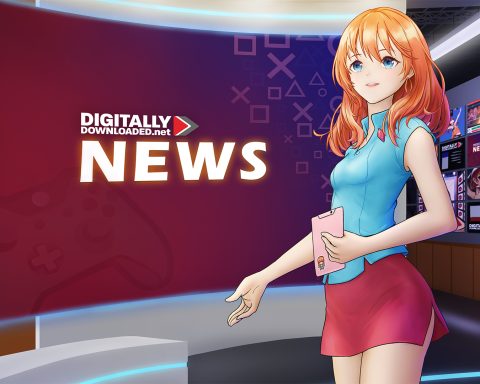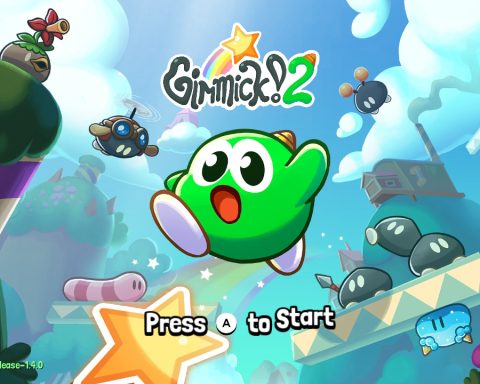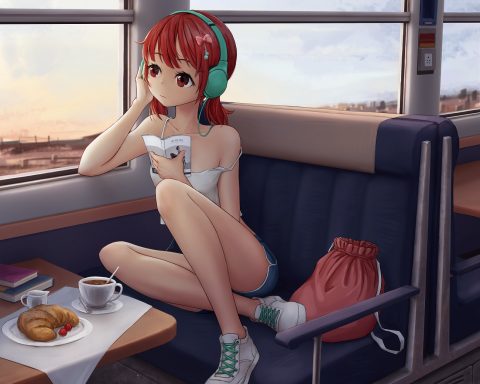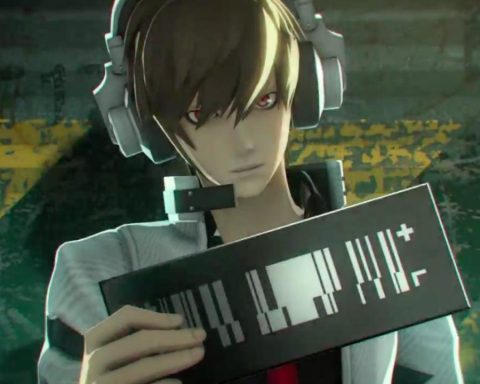Juan Raigada of aheartfulofgames recently Kickstarted action game, Heart&Slash. A fast-paced 3D action-adventure brawler, Heart&Slash follows the plight of Heart, a rogue creation existing under the Quality Assurance System (QuAsSy for short), in a world where humans no longer thrive and all civilised activity has fallen into the hands of robots. As the all-seeing leader of this nütopia, QuAsSy’s primary directive is to ensure all robots conform to standardisation protocol to remain efficient, and thereby deal ruthlessly with any opposition.
However, an insurgency has found its roots among some robots in the system, who vow to fulfil their independence one way or another. Naturally, we take control of Heart as it struggles to realise its own identity against the majority who uphold QuAsSy’s norms.
With an array of 75 different weapons and 60 different body parts available to Heart throughout the game, players are encouraged to experiment with thousands of individual combinations to aid them through their fight. Each of these influences the player’s advantage in its own unique way, ranging from the most minor advancements to tipping the scales entirely in one’s favour. The game incorporates roguelike elements to complement the fluidity of its mechanics — with every restart after death, the levels you journey through and the items/weapons at your disposal will be generated at random.
Length is now often at the forefront of direction in video-games, with AAA-development priorities shifting towards giving players more content at any expense. Recently, indie development has pioneered the trend of quick and intense experiences over unnecessary filler, which Heart&Slash aims to embrace as well. Intended as “short and brutal,” all potential levels in the game have been designed not to consume too much of the player’s time, but instead, push players to adapt to the spontaneity of the situation and make the best out of what they’re given. As Raigada tells us, creating a dynamic experience is central to the development of Heart&Slash and has been so as far back as the ideas were still on paper. However, the finer points are still under scrutiny at the moment.
“It’s still evolving, since the game is still very early in development. It was always the goal to offer a dynamic, modular experience, but the specifics changed a lot,” Raigada said. “Initially, it was just going to be weapons you equipped, so the variety was limited to combat. But as I developed the game’s alpha, I started to realise many of the features I was implementing into the game – like, for example, lock-on camera – could also be designed as an upgrade.”
“Now that we are gearing up production, this has become our way of working. Every time we think of how to improve the game, we ask ourselves if that improvement could also be designed as an upgrade.”
 |
| Juan Raigada |
To an extent, the project intends to pay homage through its gameplay to a certain style of games which mature gamers are more likely to appreciate. Inspired especially by Bayonetta, Megaman and ADOM, Heart&Slash borrows from each of these works — however, these influences are perused in a more ideational sense than being adapted outright, Raigada said.
“The fast-paced, frenetic nature of Bayonetta is definitely an inspiration here. I can only aspire to get close to the moment to moment feel of that game. The influence of Megaman is more conceptual. The idea of gaining new, very discrete powers, and the mutability of the characters can be very easily seen in Heart&Slash, since it’s the feature that defines the main character! And ADOM… Well, ADOM is just my favorite roguelike, and one that has a strong story, so it felt like the most suited roguelike to become the official inspiration for Heart&Slash,” Raigada said.
“But I think the end result is going to feel very different from all these games, since they do share very little in common. It’s more about trying to replicate impressions those games gave to me while playing, rather than mimicking certain mechanics. Although as an Easter egg, there are a couple more direct references to Bayonetta in some items.”
It may not come as a surprise that Heart&Slash first found legs as a personal part-time project of Raigada’s. As video-game production expands globally, indie development is regarded by many as an avenue into the industry by way of building a portfolio. However, there is still a focus towards technical proficiency in mainstream development, which puts a number of creators at a disadvantage.
“I don’t know that I can point to the precise point in time when I changed my mind and began working on the game as something bigger. It was definitely more than six months into the project, because it was after the level design started to take place, and thus I was confident I could finish the game no matter what,” Raigada said.
“The motivations are clearer, though. I started the game as a way to land me a job on the small-but-functioning Spanish video-game industry. However, as I progressed with the game, two things became clear. The first one is that, even showing Heart&Slash as my portfolio, it would become very difficult for me to find a job, since the industry mostly requires programmers, which is something I can do, but I’m not especially good at. Also, as the job prospects were becoming bleaker, I realised I was not yet ready to give up on Heart&Slash. After working for six to nine months on a project, the thought of leaving it unfinished and forgotten was unbearable. Once I started to realise that, every day I worked on the project, every step forward, the stronger my resolve became.”
“It’s not going to be an easy process, and we have many difficulties ahead of us, so the decision didn’t come easy. It had to wait until Thomas, a friend of mine who had seen the development of the game from its inception, decided to join the project to finally assume it was a real thing and that there was no option to stop now.”
Heart&Slash is a game with a keen sense of narrative. The themes of identity and conformity central to the plot are able to be explored on more than one level, which is something the game aims to tell of through its title characters.
While presented as the primary protagonist, Heart is not quite illustrative of the lead we’ve come to expect in the action genre. The character of Heart is a newcomer to the abrasive setting in which Heart&Slash takes place, unsure of itself and its surroundings at large. Initially, it spends most of its time evading its peers under QuAsSy and, for the most part, yearns to discover its identity in solitude.
On the other hand, the character of Slash acts as the game’s supporting protagonist/rogue and, perhaps ironically, assumes a role more “typical” of a lead. Described as a “rough veteran of the dystopian world,” Slash is intent on fighting back against the system and scorns other rebels whose only ambition is to escape.
This isn’t the first time we’ve seen a divergent take on the protagonist and, by extension, the deuteragonist, or support. A game like The Last of Us keenly demonstrates that even in the big budget arena developers are working on ways to narratively integrate two key lead roles within the one narrative. It’s not easy to stand out as an indie developer once a key feature is readily comparable to what the likes of Naughty Dog are working on, and for this reason, Raigada has expressed his concern over how Heart will be received.
“Honestly, I don’t know how much the players will care about the characters. As is said, Heart is an unusual protagonist while Slash, in some ways, is more like a typical video-game protagonist, so I expect there will be some initial disconnection — especially when Slash is introduced and we see Heart is not as highly regarded initially. I actually hope that disconnection will help the game by making the players explore the possibility space of the game and the narrative to try to shape Heart to their liking,” Raigada said.
“There’s not that much backstory work done with the characters. They sort of grew organically. First it was Heart, which basically became a representation of the customisation mechanics of the game. Basically, because the game allows you to change your appearance and faculties, Heart’s personality was shaped around trying to find who he is, the optimal or “true” configuration, so to speak.”
“Slash then was created as a “dark side” to Heart. Where Heart is unsure and frail, Slash is strong and decided. They complement each other, but there’s more than that. There’s an asymmetry in their characters that I find important, with Heart looking up to Slash form the beginning while Slash is disdainful.”
The interest Heart shows towards Slash works to embody the principal theme on finding one’s identity. While struggling to avoid the expectations of others, Heart is also eager to win Slash’s affection through their encounters — this poses a further conflict to the story when you consider the immediate difference in their priorities. Ultimately, the fate of Heart and Slash’s relationship (or lack thereof) will be determined by the player’s actions during each rendezvous through several playthroughs.
Under the main plot, the decision that the character of Heart is faced with is a commentary on the ideals that we choose to reject in our daily lives in contrast to the ones we submit to for those we care about. Whether it is concerned with our personal or professional lives — or more often than not, both — realising this balance is fundamental to our social well-being. This will resonate differently among people, which led us to ask Raigada whether there were any experiences of his own that he may see as relevant in his handling of the story.
“I think they might be coming. The game is still in development, and so are the characters and the story, though the story has been grossly mapped out,” Raigada said. “I have an outline and I know where I want to take it, but as for the particular steps to get there… that’s where actions need to be specific, and you go from a theme to more concrete moments with dynamics being explored.”
“I’m sure that, as in everything I have written, I will take a lot of inspiration from personal experience, but it hasn’t happened yet.”
It’s worth addressing the possible dissonance between Heart&Slash’s gameplay as a brawler and the profound narrative that it’s aiming to achieve. Integrating the story amidst all the action leaves an important challenge for Raigada, above all in achieving the right balance and how this will affect the game’s potential audience. He admits that certain compromises will need to be made.
“I honestly don’t think story and gameplay can be that integrated in this genre of games. At most, I hope the story to become a frame around which the gameplay can live. Something that gives sense and perhaps helps to counter the violence inherent to the genre,” Raigada said.
“Having self-realisation and love at the forefront of the story gives emotional meaning to your actions. Actions in games have meanings, we can’t escape that. And sadly the most common action in games is violence. All we can do is make the framework so unreal it doesn’t really matter that it is so violent, or trying to subvert expectations enough so that there’s a more positive feedback loop.”
“But as for balance, I’m fully aware that the most important feature in a game like Heart&Slash is gameplay. A lot of people are going to ignore the story and I know that. But I will still try to integrate the experience as much as possible, for those who will appreciate it.”
Following a successful Kickstarter, the team is now focusing their efforts on overseeing Heart&Slash on Steam Greenlight. If what you’ve read of its development interests you thus far, you can head over here to offer your vote.
– Farida Y.
Contributor









